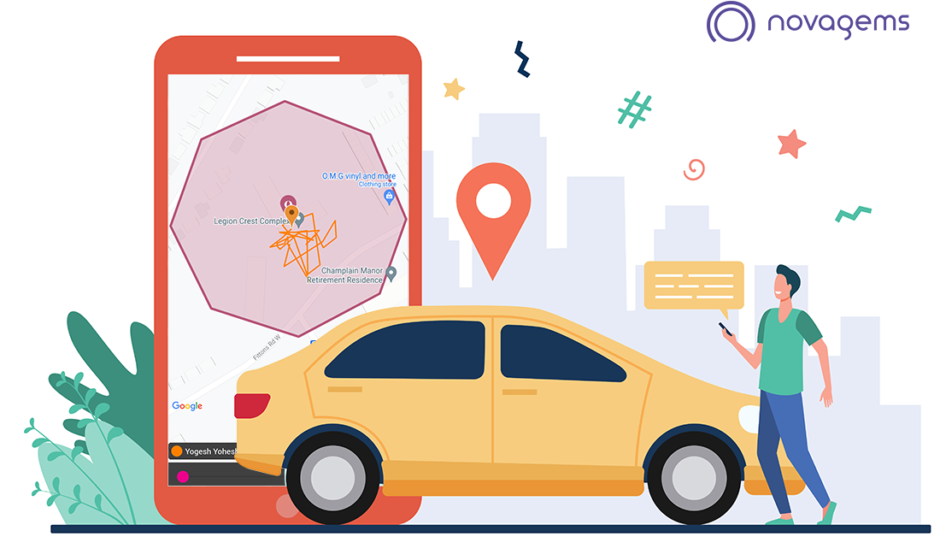Over the past decade, our communities have become more connected than ever, thanks to advances in digital technology. One significant development in this space is the rise of the mobile patrol app. These apps give local law enforcement, security agencies, and community members powerful new tools to improve communication, increase transparency, and enhance overall safety. But how do these apps achieve all of this, and what does it mean for the average resident? In this blog, we’ll explore the growing influence of mobile patrol apps, explain how they work, and examine the benefits they provide to communities.
Understanding the Concept of a Mobile Patrol App
A mobile patrol app is a smartphone application often associated with local law enforcement agencies or community watch groups. Its purpose is to bridge the gap between these organizations and the public they serve. By delivering real-time information and updates, these apps empower citizens to stay informed about what’s happening in their neighborhoods—from breaking news about emergency situations to scheduled community events and updates on missing persons.
While different mobile patrol apps may vary in their design and features, most provide a way for residents to access timely alerts, crime reports, and even resources that help with crime prevention. In some cases, users can submit tips to law enforcement directly through the app, fostering a sense of active participation in maintaining public safety.
Enhancing Transparency and Trust
One of the critical aspects of public safety and community engagement is trust. Without trust, residents may feel disconnected, hesitant to report suspicious activities, or reluctant to cooperate with authorities. A mobile patrol app plays a key role in building and maintaining that trust by offering transparent, real-time insights into local law enforcement actions.
Key ways mobile patrol apps enhance transparency:
- Instant Updates on Incidents:
When a crime occurs or an emergency situation develops, the app can send out immediate notifications. This transparency helps dispel rumors and reduces panic by providing accurate, verified information. - Open Communication Channels:
Users can often contact local officers directly through the app, submit tips, or ask questions. This open dialogue makes it feel like the police are just a few taps away, encouraging more frequent and meaningful interaction. - Publicly Accessible Crime Data:
Some apps provide crime maps that show recent incidents in a neighborhood. Having direct access to this information fosters a sense of awareness and can prevent misinformation from spreading.
By keeping residents in the loop and giving them a voice, mobile patrol apps help cultivate trust and cooperation, which are essential for any community’s well-being.
Boosting Community Engagement
In addition to fostering trust, a mobile patrol app can significantly boost community engagement. When people feel more involved in the safety and health of their neighborhoods, they become active participants rather than passive observers. This shift in attitude is crucial because engaged citizens are more likely to report problems, volunteer for community initiatives, and look out for their neighbors.
Examples of how mobile patrol apps increase engagement:
- Promoting Community Events:
Beyond crime and emergency alerts, some apps highlight positive community events—like neighborhood clean-ups, public forums, or safety workshops. By shining a light on these activities, the app encourages residents to come together, learn new skills, and strengthen local bonds. - Establishing Neighborhood Watch Groups:
Certain apps make it easier for residents to form or join local watch groups. Being connected through a digital platform streamlines communication, allowing members to share concerns, discuss suspicious activity, and coordinate efforts.
- Encouraging Feedback and Dialogue:
With built-in features for submitting feedback or commenting on alerts, residents can let law enforcement know what they’re seeing and feeling in real-time. This two-way communication transforms safety from something “provided” into something “co-created” by authorities and citizens.
As community members become more engaged, they’re more likely to take responsibility for their environment, leading to a safer, more cohesive neighborhood for everyone.
Improving Public Safety Outcomes
While community engagement and trust are critical, the ultimate goal of using a mobile patrol app is to improve public safety. Fortunately, these apps can make a measurable difference in preventing crime, reducing response times, and enhancing the overall quality of life.
How mobile patrol apps improve public safety:
- Faster Response Times:
When residents receive instant alerts about ongoing incidents, they can quickly decide how to respond—perhaps by staying indoors, securing their property, or alerting others. Law enforcement can also benefit from rapid tip submissions, leading them to suspects or victims more efficiently. - Better Resource Allocation:
By analyzing the data collected through the app—such as frequent reports, suspicious activities, or specific neighborhoods in need—police departments can allocate their resources more effectively. This data-driven approach ensures that officers are deployed where they’re most needed. - Encouraging Crime Prevention:
Education is a powerful tool in crime prevention. Mobile patrol apps often share safety tips, articles, and guidance on securing homes, cars, and personal belongings. When residents take preventive measures, they reduce the overall opportunities for criminals. - Solving Crimes More Effectively:
The more information police have, the easier it is to solve crimes. If community members can quickly and anonymously submit tips through the app, it shortens the investigative timeline. More solved cases ultimately mean a safer community.
Real-World Examples and Success Stories
It’s one thing to talk about the theoretical benefits of a mobile patrol app, but how does this technology play out in real life?
- Local Missing Persons Cases:
When a vulnerable individual goes missing—be it a child, an elderly resident, or someone with special needs—time is of the essence. Through a mobile patrol app, law enforcement can instantly alert thousands of residents, providing a photo and basic information. With more eyes on the lookout, the odds of a quick and safe recovery increase significantly. - Neighborhood Crime Reduction:
Some communities that have adopted mobile patrol apps have reported decreased petty crimes and vandalism. Residents, now more aware of suspicious activities, are quicker to report them. This immediate feedback loop helps deter criminals who realize that an entire community is vigilant and connected. - Informed Evacuation and Emergency Response:
In areas prone to natural disasters—such as wildfires, hurricanes, or floods—a mobile patrol app can save lives. Real-time alerts help residents prepare, evacuate, and stay updated with accurate information from local authorities. Instead of relying on word-of-mouth or slower traditional channels, people can access critical information right in their pockets
Overcoming Challenges and Concerns
While the impact of mobile patrol apps on community engagement and public safety is largely positive, there are some challenges and concerns to address:
- Data Privacy and Security:
Users may worry about the information they share through the app. Reputable mobile patrol apps employ strong encryption and security measures to protect personal details. Building trust requires transparency about how data is collected, stored, and used. - Digital Divide:
Not everyone has access to a smartphone or reliable internet. This creates a potential gap in who can benefit from the app. Communities should consider parallel communication methods—like traditional newsletters or community bulletin boards—to ensure everyone stays informed. - Potential for False Reports:
While community-generated tips are valuable, there is also the risk of false or malicious reports. App administrators and law enforcement must have protocols in place to verify information and prevent the spread of rumors.
- Over-Reliance on the App:
While the app is a powerful tool, it should complement—not replace—other community engagement and safety initiatives. Personal interactions, community meetings, and traditional policing methods remain essential.
By acknowledging and addressing these concerns, community leaders and law enforcement can ensure that mobile patrol apps remain a reliable and trustworthy resource.
The Future of Mobile Patrol Apps
As technology continues to evolve, mobile patrol apps are likely to become even more sophisticated. We may see integration with smart home devices, allowing residents to receive safety alerts directly through their home security systems. Improved artificial intelligence could analyze data patterns, predicting where certain crimes are more likely to occur and helping police be more proactive.
In addition, augmented reality features might one day let users see localized safety data through their phone’s camera, pointing out safe zones or emergency stations in real-time. The possibilities are endless, and the goal remains the same: to create safer, more connected communities.
Conclusion
The introduction of a mobile patrol app into a community can greatly enhance both engagement and public safety. By providing real-time information, promoting transparency, encouraging two-way communication, and enabling data-driven policing strategies, these apps play a vital role in forging stronger relationships between residents and law enforcement.
As technology continues to advance, we can expect mobile patrol apps to become even more integral to how communities stay informed, collaborate, and protect one another. In the end, the true impact of these apps lies in the people who use them—the concerned citizens, dedicated officers, and active community groups who work together to create a safer and more connected world.



